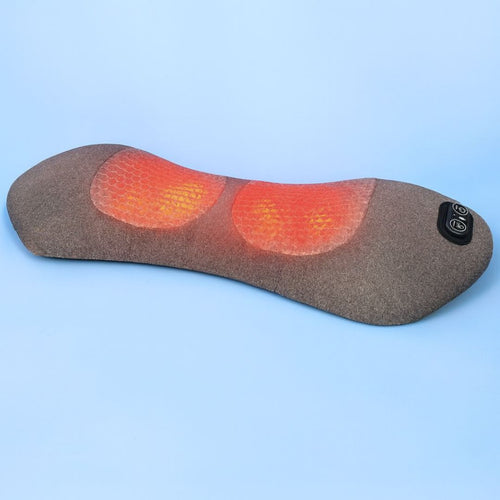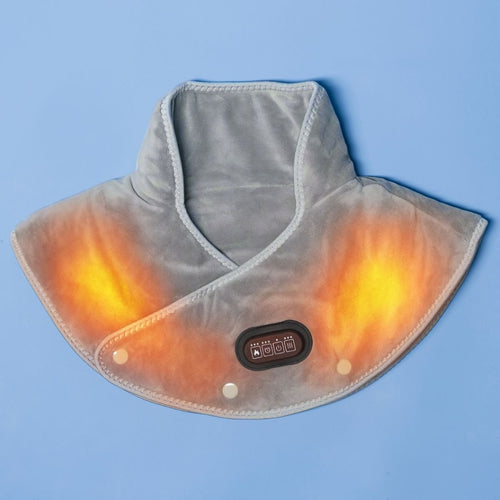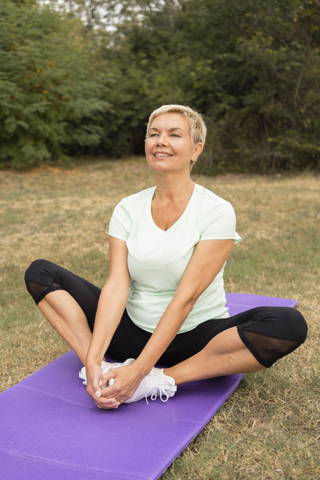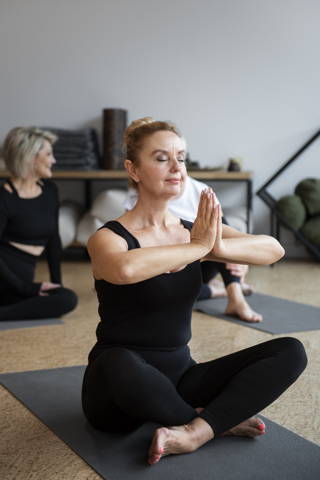Natural Remedies for Joint and Muscle Pain Relief for Women Over 40

So, You're Feeling Those Midlife Aches?
Yeah, me too.
One day, you're power-walking like a champ. The next? Your knees are cracking louder than your morning cereal.
Turns out that joint and muscle pain isn't just for grandparents.
But before you resign yourself to a life of creaky stairs and heating pads, let's talk solutions.
I've done the digging (so you don't have to), and here's the lowdown on natural ways to keep your body moving—without feeling like the Tin Man.
What's Causing the Pain?

Remember your 20s?
You had boundless energy.
Your 30s? You were still managing.
But once you hit your 40s, it can feel like your energy levels take an unexpected nosedive.
Why does this happen?
Aging plays a role, but it’s not the full story.
Several factors contribute to feeling more drained; the sooner you address them, the sooner you can get your energy back.
Here’s what’s happening inside your body:
• Hormonal shifts – Estrogen, progesterone, and testosterone levels start declining, leaving you feeling sluggish.
• Metabolism slowdown – Your body isn’t converting food into energy as efficiently.
• Nutrient depletion – Your body absorbs key vitamins and minerals less effectively over time.
• Stress + lack of sleep – Life is busier than ever, meaning burnout quickly creeps in.
It’s not just getting older—it’s a mix of factors. But the right strategies can help you bounce back.First things first—why does everything hurt now?
If you've been wondering why your body feels stiffer than it used to, you're not alone. As we age, our bodies go through subtle but significant changes that can lead to discomfort, stiffness, and even pain.
Understanding what's behind these aches is the first step in managing them effectively.
Blame it on a mix of:
• Inflammation (thanks, processed food and stress)
• Decreasing muscle mass (yep, it happens)
• Hormonal changes (because midlife loves surprises)
• Sitting too much (guilty as charged)
Your body is shifting, but that doesn't mean you have to accept the discomfort. Small tweaks can make a huge difference.
Natural Ways to Keep Your Joints Happy
1. Move (Even When You Don't Want To)

I know, I know—when your body aches, the last thing you want to do is exercise. But here's the thing: the less you move, the worse it gets. Movement helps lubricate joints, strengthens muscles, and improves circulation—meaning less pain in the long run.
Try incorporating low-impact exercises like:
• Walking (bonus points for fresh air)
• Swimming (because weightless workouts = less strain)
• Yoga & stretching (your joints will thank you)
• Strength training (stronger muscles = better joint support)
Even 20 minutes a day can work wonders.
2.Ensuring Proper Posture and Ergonomics

Ever noticed how much you hunch over your phone or laptop? Poor posture is a sneaky culprit behind back, neck, and joint pain. Slouching puts extra pressure on your spine and muscles, making stiffness worse over time.
The fix? Simple ergonomic adjustments:
Luckily, small changes can make a huge difference:
• Invest in an ergonomic chair or cushion – Your back will thank you.
• Adjust your screen to eye level – No more bending or craning your neck.
• Take a break every 30–60 minutes – Stretch, walk around, reset your posture.
A few tweaks, and you'll notice less tension, fewer aches, and way better posture overall.
3.Eat Like Your Joints Depend on It (Because They Do)

Food is either fighting inflammation or fueling it.
What you eat plays a huge role in how your joints feel. Inflammatory foods (looking at you, sugar and processed carbs) can make stiffness worse, while nutrient-rich foods can help reduce pain and keep joints strong.
Load up on:
• Omega-3s (salmon, walnuts, flaxseeds)
• Leafy greens (your bones love calcium)
• Turmeric & ginger (nature's anti-inflammatory power duo)
• Berries & nuts (packed with antioxidants)
And maybe ease up on the sugar. Excess sugar contributes to inflammation, which makes pain worse.
4.Incorporating Regular Massage Therapy

Who doesn't love a good massage? It melts away muscle tension, boosts circulation, and soothes aches and stiffness—leaving you refreshed and ready to go!
While professional massages can be pricey, you don't need a spa day to get the benefits. Try:
• Self-massage techniques – Use your hands to target tight areas.
• Foam rollers & massage balls – Perfect for loosening stiff muscles.
• Warm-up oils & essential oils – Help enhance relaxation and blood flow.
A few minutes of self-massage a day can work wonders for your body!
5.Heat, Ice, and Repeat

Ever wake up feeling stiff? Heat is your best friend—it relaxes tight muscles, improves blood flow, and helps you move more freely. Got swelling or soreness after a workout? Ice it down! Cold therapy reduces inflammation, numbs pain, and prevents further swelling.
Alternating between hot and cold therapy can help:
• Reduce muscle stiffness
• Soothe sore joints
• Speed up recovery
Pro tip: Take Epsom salt baths for an extra muscle-relaxing boost.
6.Supplements (But Make Them Smart)

Not all supplements are created equal, especially when it comes to joint and muscle health. Choosing the right ones can make a big difference in keeping your body strong, flexible, and pain-free.
Whether you're looking to prevent stiffness, support recovery, or maintain mobility, the right nutrients can help. A few MVPs to consider:
•Magnesium (relaxes muscles and prevents cramps)
•Vitamin D & calcium (essential for bone strength)
•Collagen & hyaluronic acid (keeps joints cushioned)
•Glucosamine & chondroitin (supports cartilage health)
If you're unsure what's right for you, check with a doctor or nutritionist.
7.Stress Less, Stretch More

You know that tightness in your shoulders when you’re stressed? That tension doesn’t just stay there—it affects your whole body. Stress increases inflammation and makes joint and muscle pain way worse.
Try incorporating stress-relief techniques like:
• Deep breathing (inhale 4 seconds, exhale 6)
• Journaling (dump the stress onto paper)
• Long, relaxing baths (add essential oils for extra relief)
Your mind and body are more connected than you think.
8.Prioritize Sleep Like Your Health Depends on It (Because It Does)

Ever notice how everything hurts more when you're sleep-deprived?
That's because sleep is when your body repairs muscles, reduces inflammation and balances hormones. If you're tossing and turning at night, your pain levels might skyrocket.
Some ways to improve sleep quality:
• Stick to a schedule (same bedtime & wake-up time)
• Limit screens before bed (blue light messes with melatonin)
• Try sleep-inducing herbal teas (hello, relaxation)
A well-rested body is a happier, pain-free body.
The Bottom Line

Pain after 40 isn't inevitable. You just need to give your body the right support. So before you accept discomfort as the new normal, ask yourself…
Am I doing everything I can to keep my body strong and pain-free? Because you deserve to feel good at any age.
And if you need a little extra help, Callixe has everything you need for a pain-free life.
Trending Topics
Enhancing Wellness for Women Over 40
Natural Solutions for Energy and Vitality in Your 40s






